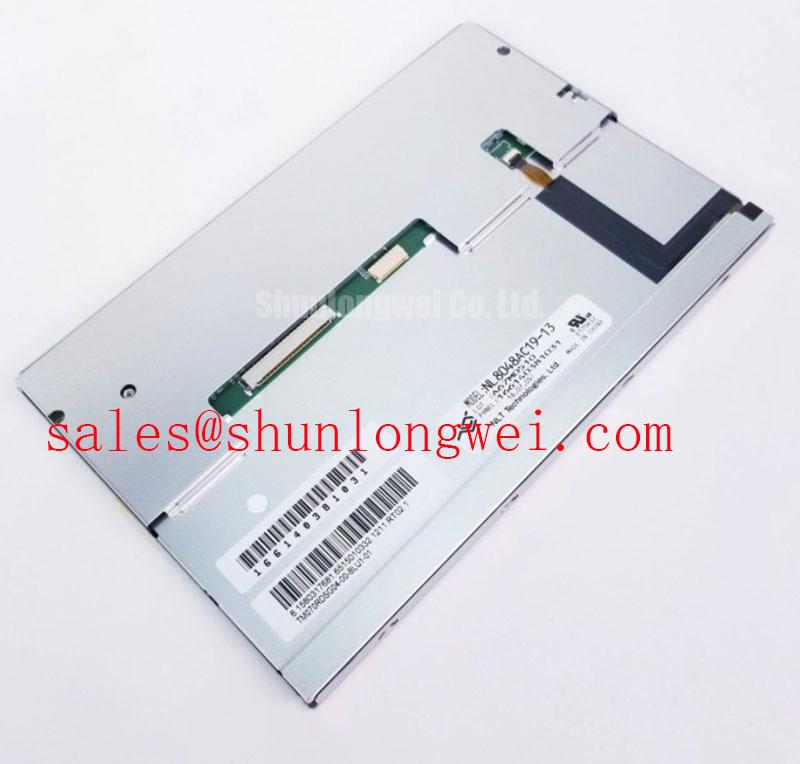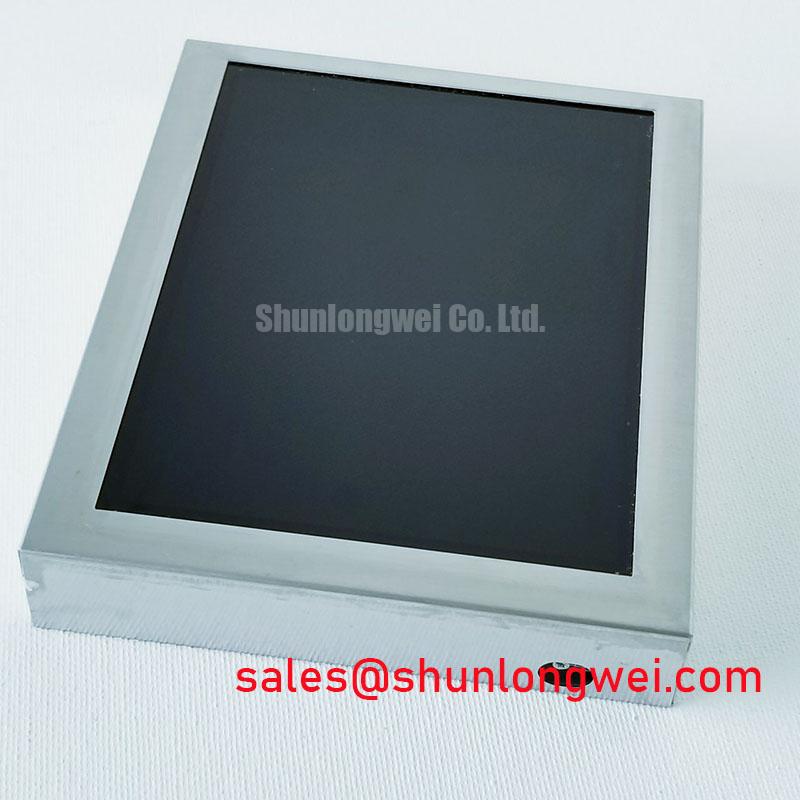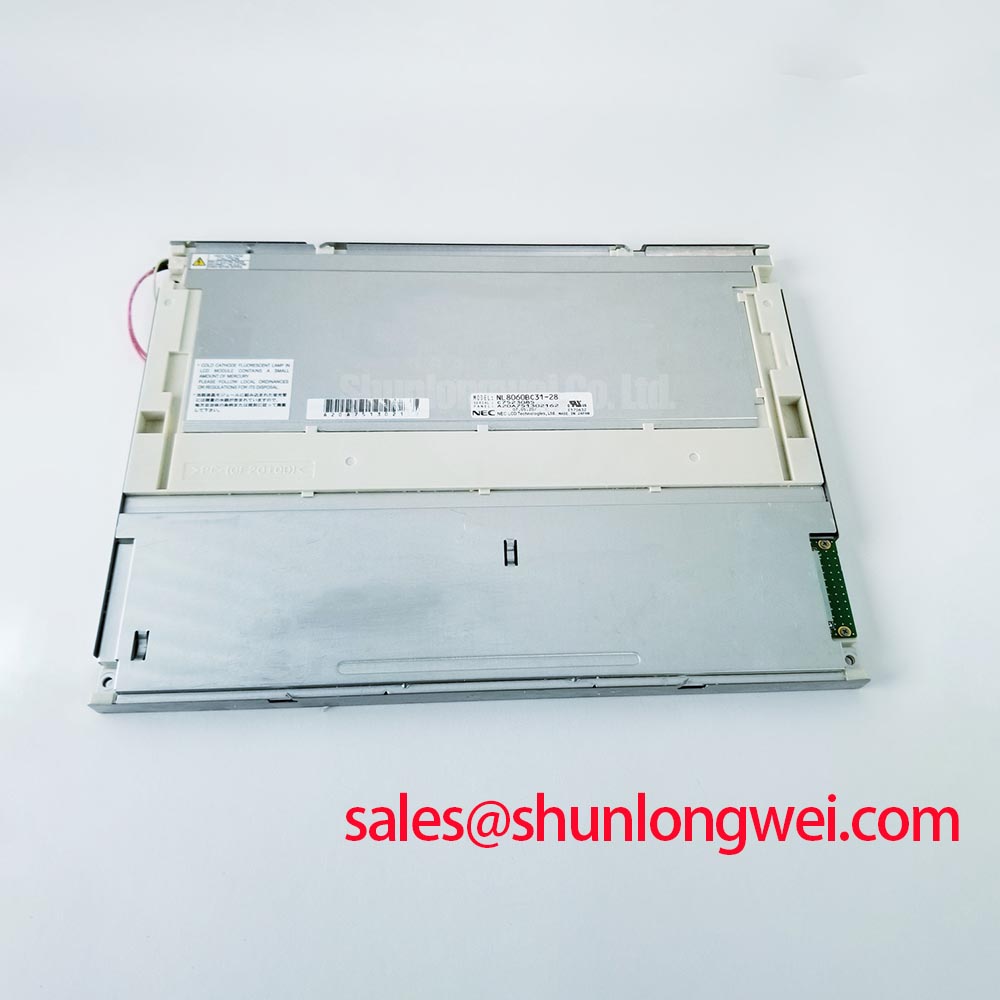Content last revised on November 21, 2025
NL8048AC19-13KD: A 7.0-inch WVGA TFT-LCD Engineered for Environmental Extremes and System Reliability
Introduction to the NL8048AC19-13KD Industrial Display
Delivering Uncompromising Visuals in Harsh Operating Conditions
The NL8048AC19-13KD is a 7.0-inch WVGA industrial display engineered for long-term operational reliability in environments where temperature fluctuation and consistent performance are non-negotiable. Its core value lies in providing a stable visual interface for systems deployed outside of typical climate-controlled settings. With key specifications of 7.0" WVGA (800x480) | LVDS Interface | Wide Operating Temperature, this display offers essential performance for demanding applications. The primary benefits include exceptional thermal resilience and a long-life LED backlight system, directly addressing the core engineering challenge of maintaining uptime and readability in fluctuating ambient conditions. For industrial HMIs that must function reliably from cold-start to peak operational heat, the NL8048AC19-13KD's wide temperature range provides a critical design advantage.
Key Parameter Overview
Specification Breakdown and Engineering Value Interpretation
The technical specifications of the NL8048AC19-13KD are foundational to its performance in ruggedized systems. Each parameter is selected to ensure consistent operation and straightforward integration into industrial-grade hardware. The following table highlights critical specifications and translates them into their direct engineering value.
| Parameter | Value | Engineering Significance & Value |
|---|---|---|
| Screen Size | 7.0 inches (Diagonal) | Provides a compact yet effective viewing area for data-rich HMIs without demanding a large physical footprint, ideal for control panels and portable instrumentation. |
| Resolution | 800 x 480 pixels (WVGA) | Delivers clear, sharp images for standard industrial GUIs, ensuring readability of critical operational data and status indicators. |
| Luminance | 470 cd/m² (Typ.) | Offers solid brightness for indoor industrial environments and sufficient visibility for many outdoor, shaded applications, reducing user error caused by poor readability. |
| Operating Temperature Range | -20°C to +70°C | This wide range is the module's defining feature. It guarantees stable performance in unheated outdoor enclosures or in proximity to heat-generating machinery, significantly simplifying system thermal design. |
| Storage Temperature Range | -30°C to +80°C | Ensures component integrity and reliability during shipping and storage in globally diverse climates, preventing premature failure before deployment. |
| Interface | LVDS (Low Voltage Differential Signaling), 1ch, 6-bit | A standard, noise-immune interface that simplifies electrical integration with common single-board computers and custom controllers, reducing design complexity and potential EMI issues. |
| Backlight System | White LED (WLED) with integrated driver | The long-life LED backlight reduces the total cost of ownership (TCO) by minimizing maintenance requirements. The integrated driver further simplifies the power delivery design for the system integrator. |
Note: The parameters listed above are for reference. For complete electrical and mechanical specifications, please refer to the official documentation.
Download the NL8048AC19-13KD datasheet for detailed specifications and performance curves.
Application Scenarios & Value
Delivering Visual Clarity in Demanding Field Applications
The NL8048AC19-13KD is best suited for applications where environmental conditions are a primary design constraint. Its robust thermal architecture makes it a prime candidate for HMIs in industrial automation, outdoor kiosks, and vehicle-mounted systems.
Consider the challenge of designing a control panel for an agricultural harvester. The HMI is exposed to sub-zero temperatures on early mornings and direct sunlight causing high cabin temperatures in the afternoon. A standard display might suffer from slow response times in the cold or image degradation in the heat. The NL8048AC19-13KD's wide operating temperature range directly solves this problem, ensuring the display remains responsive and readable across the entire operational shift. This resilience is not just a specification; it translates to equipment uptime, operator efficiency, and safety. For systems requiring a larger diagonal with similar ruggedness, the G084SN05 V9 offers an 8.4-inch SVGA solution also built for industrial environments.
Frequently Asked Questions (FAQ)
Technical Inquiries for the NL8048AC19-13KD
What is the primary benefit of the -20°C to +70°C operating temperature range?
The primary benefit is design simplification and enhanced system reliability. It allows engineers to deploy equipment in outdoor or unconditioned indoor environments without requiring complex and costly heating or cooling subsystems for the display, reducing both the bill of materials (BOM) and potential points of failure.
How does the LVDS interface benefit system integration?
The LVDS interface uses low voltage differential signals, which provides high immunity to common-mode noise. This is critical in industrial environments where motors, inverters, and relays can introduce significant electromagnetic interference (EMI). It allows for longer cable runs between the controller and the display compared to parallel interfaces and uses fewer conductors, simplifying the overall system wiring.
Is the 470 nit brightness sufficient for outdoor use?
A brightness of 470 cd/m² is considered highly effective for most indoor industrial settings and is usable in many outdoor applications, particularly in shaded or indirect sunlight conditions. It is not classified as a full "sunlight readable" display (which typically starts around 1000 cd/m²), but it provides a strong balance of visibility and power consumption for a wide range of control and monitoring applications.
What does the 6-bit color depth (262k colors) mean for a typical industrial HMI?
A 6-bit color depth is perfectly adequate for the vast majority of industrial user interfaces. It can clearly render status indicators (e.g., green for normal, red for alarm), basic schematics, data readouts, and graphical buttons. It delivers the functional color representation needed for clear communication without the higher cost and data bandwidth requirements of 8-bit or 10-bit panels used in graphics-intensive medical or design work.
What is the typical lifespan of the WLED backlight, and why is it important?
While the exact rating should be confirmed in the datasheet, WLED backlights in this class typically offer lifespans of 50,000 to 70,000 hours to half-brightness. This longevity is a critical component of the system's Total Cost of Ownership (TCO). For equipment intended to operate for a decade or more, a long-life backlight means fewer service calls, reduced maintenance costs, and greater equipment availability.
Industry Insights & Strategic Advantage
Meeting the Demand for Ruggedized, All-Weather HMIs
The push towards Industry 4.0 and the Industrial Internet of Things (IIoT) is extending sophisticated control systems into environments previously considered too harsh for complex electronics. From oil and gas fields to smart agriculture and logistics depots, there is a clear trend towards deploying data-rich HMIs at the operational edge. The NL8048AC19-13KD directly supports this trend. Its design ethos prioritizes survival and performance over superfluous features. For OEMs, this means being able to offer products that can be reliably deployed in a wider range of global climates and industrial settings, creating a significant competitive advantage. This focus on durability is a cornerstone of modern industrial design, a topic explored in depth in the ultimate guide to TFT-LCDs for industrial applications.
Application Vignette
Engineering a Reliable Marine GPS Navigation Display
A key challenge in marine electronics is creating displays that can withstand constant exposure to a wide thermal range and variable lighting. A navigation unit on a boat's console may be chilled by morning sea spray and baked by the midday sun hours later. A consumer-grade display would quickly fail, showing lagging performance in the cold or blackening in the heat. The NL8048AC19-13KD is an engineered solution for this exact scenario. Its -20°C low-temperature threshold ensures the liquid crystals remain responsive for immediate chart plotting upon startup. Its +70°C high-temperature resilience prevents thermal shutdown or damage when enclosed in a console under direct sun. This wide operational window is akin to having a built-in thermal safety margin, allowing the system designer to focus on sealing and waterproofing the enclosure rather than complex active thermal management. The ultimate system-level benefit is unwavering reliability, providing the captain with critical navigation data when it is needed most, independent of the weather.
An Engineer's Perspective on Deployment
From an integration standpoint, the NL8048AC19-13KD represents a low-risk, high-reliability component choice for systems facing unpredictable thermal loads. Its value is not in headline-grabbing resolution or color gamut but in its steadfast, predictable performance across a temperature range that would sideline lesser displays. For engineers designing systems that will be deployed far from service centers, this focus on intrinsic durability and a standard LVDS Interface provides the confidence needed to specify a component for long-term, mission-critical operation. This is a display built for the realities of the field, not the controlled conditions of a lab.









